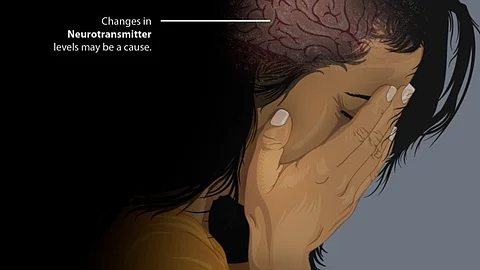Major depressive disorder is a widespread mental illness, from which suffer about 280 million of people all over the world. Patients lose interest to every kind of activity, face insomnia, sleepiness, weakness, guilt feeling and self-effacement. For detection of depressive disorder people use subjective scales, patients’ reports and observations of a doctor, this all not always enables to diagnose severity of disease precisely. In the last years to improve the diagnostics of mental disorders doctors began to use algorithms of machine education on the base of artificial neuronal webs, similar to those that function in brain. However, attained with their help results are hard to interpret. As a result, it is impossible to segregate main parameters, on the base of which the neuronal web makes decision.


